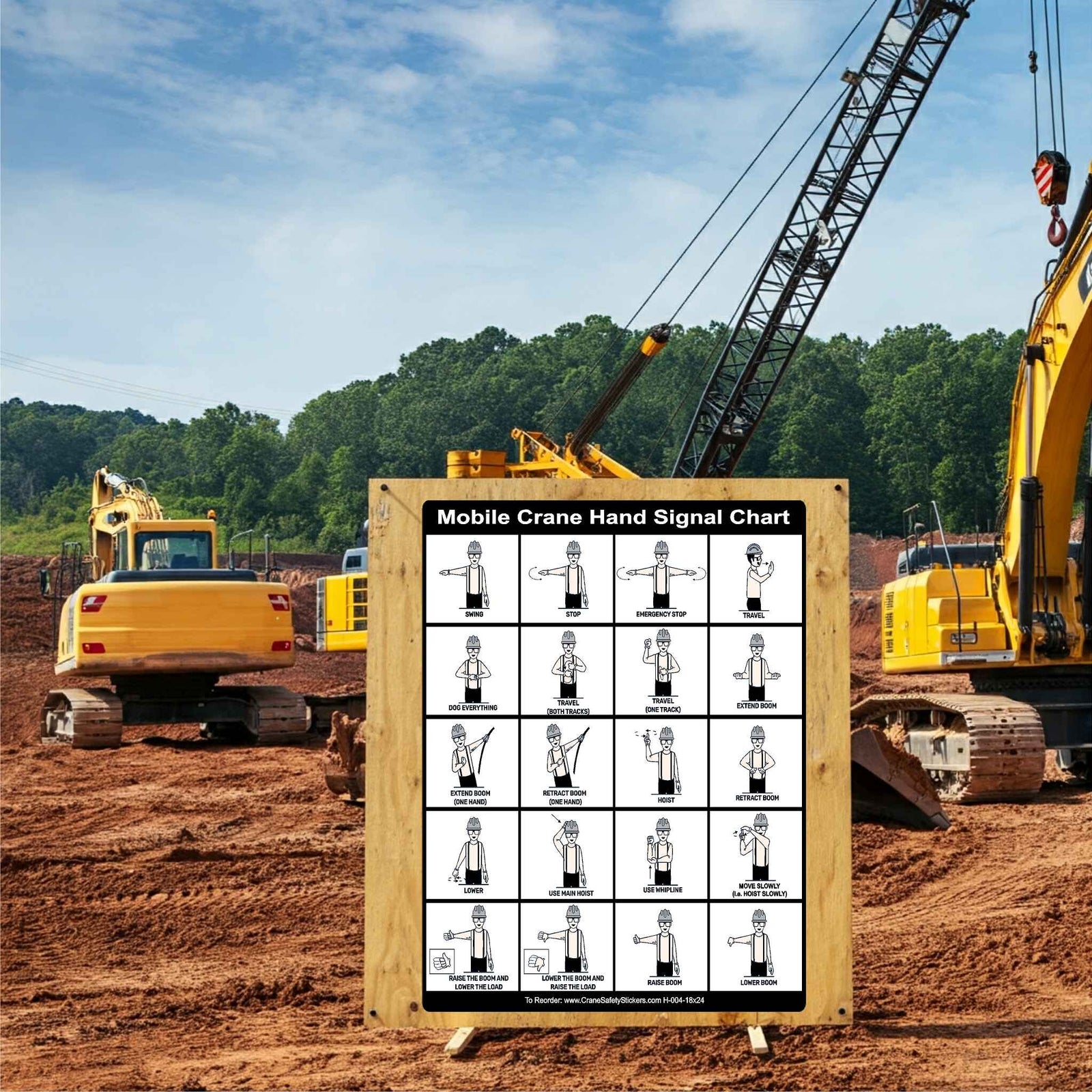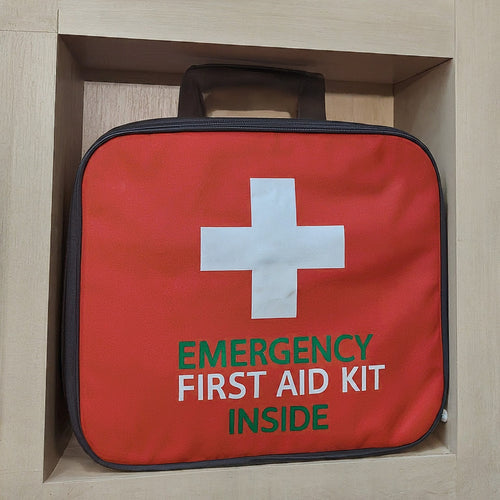To purchase a hand signal chart, click HERE.
20 Common Crane Hand Signals for Operating a Crane.
Ensuring proper coordination of hand and arm signals is essential for crane operations on a job site. Effective lifting signal communication between signal personnel and crane operators is vital for completing tasks efficiently, within schedule, and with safety as a top priority.
OSHA has set guidelines for using standardized hand and arm signals with cranes. An OSHA Certification in these signals is now required for individuals working as crane operators or signal personnel.
OSHA Hand Signals Requirements.
Hand and Arm Signals are designed to be used when job sites are loud and verbal communication is impaired by loud machinery, trucks, jackhammers, etc.
The crane signal person is the eyes and ears of the crane operator. Their job is to instruct the crane operator in safely lifting, moving, and placing the load in the precise location.
The lifting signal person should memorize all the signals without visual aids. They should also be aware of the types of cranes used on the job site. Some cranes have different load-moving methods and may require a different hand signal.
Commonly Used Boom Crane Hand Signals With Descriptions.
All OSHA hand signals shown here are motion signals. Most of the time, the hand gives motion with your arm extended or retracted. Pay attention to how your thumb points or how your fingers are extended. This is a crucial signal in many hand signals.
Stop Signals.
The first and most important hand signal for crane operators is the STOP signal. There are three different signals for stopping: Emergency Stop, Stop, and Dog Everything. When any of these signals are used, the operator will halt the crane.
Emergency Stop Crane Hand Signal: The signal person communicates this signal by extending both arms horizontally out from the body with palms down and swinging both arms back and forth from chest out to fully extended. This tells the operator to Stop Everything.

Stop Crane Hand Signal: The signal person will extend one arm horizontally with the palm down and swing it back and forth from the body until it is fully extended. This will tell the operator to stop or pause an action.

Dog Everything Hand Signal - Clasp both hands and place them at waist level. This will tell the operator to stop all actions and movements.

Boom Signals.
Boom signals tell the crane operator how to maneuver the boom.
Raise Boom Hand Signal: The signal person extends one arm horizontally and points the thumb up with a closed fist. This tells the operator to raise the boom.

Lower Boom Hand Signal: The signal person extends one arm horizontally and points the thumb down with a closed fist. This tells the operator to lower the boom.

Swing Boom Hand Signal: Extend one arm horizontally, with your index finger pointing in the direction the signal person wants the boom to swing.

Extend Boom Hand Signal or Boom Out Hand Signal: Place your hands in a fist in front of your waist and point only your thumbs outwards. This will tell the crane operator to extend or lengthen the boom.

Retract Boom Hand Signal or Boom In Hand Signal - Place your hands in front of your waist in a fist and point only your thumbs inwards toward each other. This will tell the crane operator to retract or shorten the boom.

Load Signals
Once the load has been lifted, the signal person uses load signals to tell the crane operator what to do with the load on the load line.
Hoist Load Hand Signal: Extend one arm vertically toward the sky or ceiling, pointing your index finger up and making small circles with your index finger and hand. This will tell the crane operator to lift the load upwards.

Lower Load Hand Signal: Extend one arm vertically toward the ground or floor, point your index finger down, and make small circles with your index finger and hand. This will tell the crane operator to lower the load.

Controlling the Speed of an Action
Using speed signals will tell the crane operator to control the pace of the crane action.
Move Slowly Hand Signal - Place one hand above the hand, giving the signal. This tells the crane operator to slow down the action he is doing or will do. In this example, the signal is telling the operator to hoist slowly.

- These are the most common or Standard Hand Signals for cranes.
- These can also be used for Rigging Hand Signals.
- Click Here To Purchase Our Mobile Crane Hand Signal Chart Sticker and Banner.
- These are also available as Crane Hand Signals in Spanish.
- Click here for our FREE Crane Hand Signals Poster.
Updated November 11, 2023





Leave a comment (all fields required)